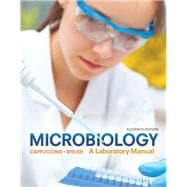For courses in Microbiology Lab and Nursing and Allied Health Microbiology Lab
A Flexible Approach to the Modern Microbiology Lab
Easy to adapt for almost any microbiology lab course, this versatile, comprehensive, and clearly written manual is competitively priced and can be paired with any undergraduate microbiology text. Known for its thorough coverage, straightforward procedures, and minimal equipment requirements, the Eleventh Edition incorporates current safety protocols from governing bodies such as the EPA, ASM, and AOAC. The new edition also includes alternate organisms for experiments for easy customization in Biosafety Level 1 and 2 labs. New lab exercises have been added on Food Safety and revised experiments, and include options for alternate media, making the experiments affordable and accessible to all lab programs. Ample introductory material, engaging clinical applications, and laboratory safety instructions are provided for each experiment along with easy-to-follow procedures and flexible lab reports with review and critical thinking questions.







